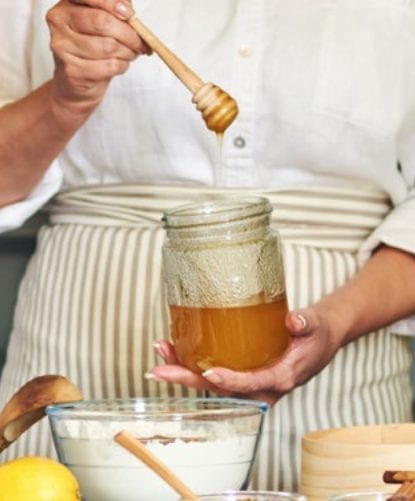
Cannabis Honey at Home
Earlier this year a friend asked me if I would like to join her for a Saturday mead tasting in Southeast Portland. The party — celebrating recently opened Mead Market, the city’s only mead bottle shop and an entirely bee-centric store — was easy to agree to, but not just because the alcohol and dandy snacks would be free. Horticulture is my favorite.
The tastings blew our socks off. We buzzed through Mead Market that Saturday in a frenzy, falling to pieces over bulk beeswax and intricate Norse labels festooning bottles of every size. The mead was ambrosia and the mead-makers themselves were decent people, gnome-like in their fervor for fermentation and the insects that make their craft possible.
If I’d appreciated bees and their bounty before, my respect for their place in horticultural science was whipped into shape that afternoon, and in the months that have elapsed since I’ve thought a lot more about how cannabis relates to honey.
Cannabis and honey share several similarities. For one thing, they are both derived from flower, cannabis being the cured flower (bud) itself, while honey a bee-processed pollen or nectar. Therefore they both tangle with terroir, or the effect of a plant’s environment (climate, biodiversity, soil) on the nature of its edible byproduct. Honey is made from different pollens that take on different flavors, just as the same cannabis strain growing in different climates will produce varying buds. And, though their effects differ, both cannabis and honey have ancient medicinal histories.
Last month I offered up the recipe for my favorite medicated beverage, a CBD honey-infused tea latte. This is just one iteration of the cannabinoid-laced honey life; honey is also a powerful topical medicine, particularly when combined with cannabis, and foods incorporating medicated honey take edible-making to the next level of healthful.
THC and CBD honey are both old-hat in dispensaries by now, but when they aren’t packaged up in single-serve sticks, they run a high price tag. By making your own cannabis honey at home, you not only save money, but get to dial in flavor, potency, and type of high to your preference.
Making cannabis honey is not that different than making cannabis butter. You’ll need to begin with decarboxylated cannabis: in other words, cooked flower. This is a simple but crucial first step when converting cannabis into something edible. Heating up the flower activates it by converting non-psychoactive cannabinoids into psychoactive ones. It’s the same process happening in your joint or dab rig, and just as in that realm, the lower the temperature the cleaner the process.
Cannabis Honey
7 grams decarboxylated cannabis
1 cup of honey
cheesecloth
string
a crockpot
mason jars
Set your oven to 150 degrees, and spread your pre-ground strain of choice onto a parchment paper-lined baking sheet. Bake the cannabis, taking it out every fifteen minutes or so to rotate the bud for even cooking. Cooking time can vary based on strain, moisture-content, and how coarse the flower is ground. Somewhere between 45 minutes and an hour the flower should be toasted and crumbly, but not burnt.
Take the activated cannabis and wrap it into several layers of cheesecloth, tying a bundle with a natural string (or hemp thread!), while leaving enough room for the flower to move freely.
Set your crockpot on low, and pour one cup of honey per seven grams of flower. (The more honey the better, so that the flower is fully submerged in the slow cooker.)
Leave the honey and cannabis warming for up to eight hours, stirring periodically. Turn off the slow cooker and let the honey cool. When ready to jar the honey, turn back on low to loosen the honey, then squeeze the cheesecloth out.
Use a spatula and a funnel to fill honey into jars. Store in a cool, dark place.
Choose a strain you love to make the process the most worthwhile, and choose a honey you won’t get tired of (more herbaceous honeys might not mix into everything so well). Put your cannabis honey on toast or in tea. Blend it into unsweetened yogurt, bake it into breads and cookies, or stir some into lemon, ginger, and cayenne tea to kick a cold. Once tasted and tested, you’ll know best how many spoonfuls will do the trick.
Written by Regan Crisp




Leave a Reply